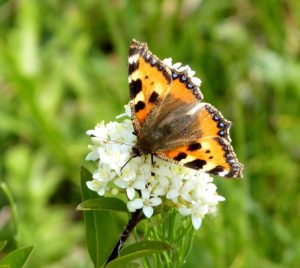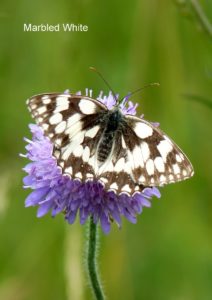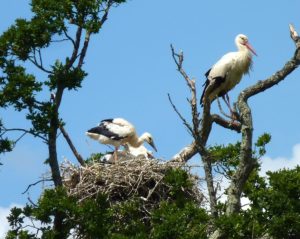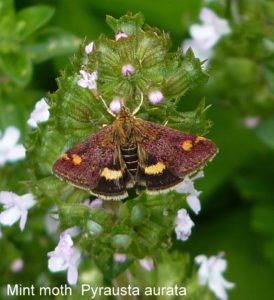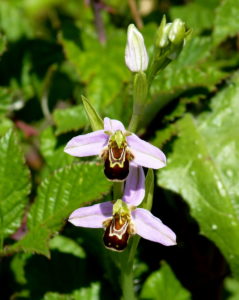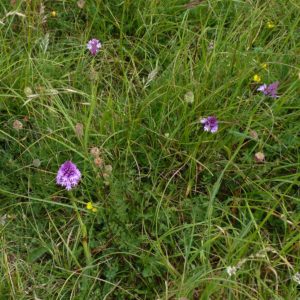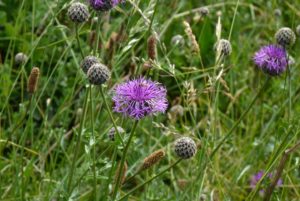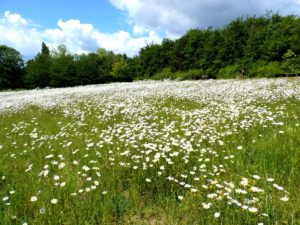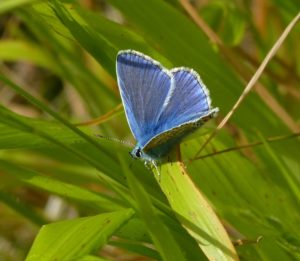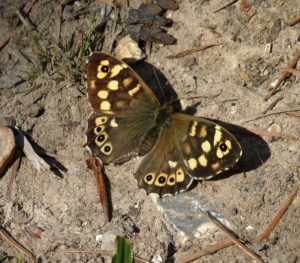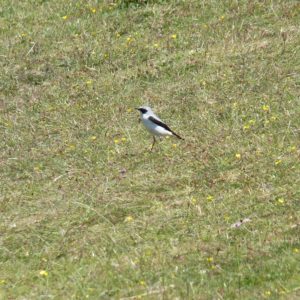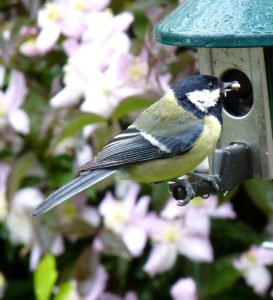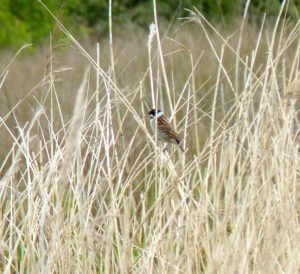If you go down to the Rife today you will be sure to see acres of blue flax in the Ferring/East Preston Gap. Flax or Linseed produces a pretty blue flower which bees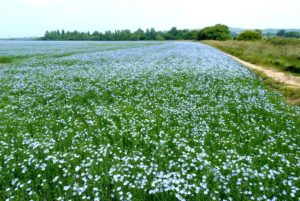 love. The seeds that follow are in little round seed boxes which are crushed to extract linseed oil. Flax used to be used to make linen but this variety is only used for its oil.
love. The seeds that follow are in little round seed boxes which are crushed to extract linseed oil. Flax used to be used to make linen but this variety is only used for its oil.
Yearly Archives: 2020
Nature Notes – 16th June
A few Small Tortoiseshell butterflies have been seen on the Rife. Once exceedingly common, they are now only seen in very small numbers. Their eggs are laid on nettles and there are plenty of these on the Rife so it is unclear why they are in steep decline. If you see any in your garden please report them to me to my email address: pat@pathallpics.co.uk. If you walk up onto Highdown, the Marbled Whites have just emerged. Look out also for the Large and Small Skippers.
If you have an opportunity to travel up to the Knepp Estate on the A24 (only 20 minutes by car from Ferring) you will just catch the young storks before they leave their nest. This is the first time ever for 400 years that storks have bred in this country and right on our doorstep. A unique and wonderful experience which you may have seen on Springwatch.
If you are confined to your garden, look out for all the small ‘bugs’ that are visiting our plants. If you have a herb bed, you may see the delightful little Mint Moth. You could make a list of all the insects that you see in your garden: Ladybirds, Greenflies, Dragonflies, Damselflies, Bees, Wasps, Flies, Hover flies and Beetles.
Let it Bloom, June
Did you follow the National Trust’s advice to ‘No mow, May’? We were asked to leave an area of our lawns to grow and to see how many wild flowers appeared. Mine is mown around the edges, with a central area left and this is attracting many birds including goldfinches and blackbirds. If you haven’t done this, it is not too late! Let it Bloom in June!
See under nature notes for many exciting sightings.
Nature Notes – 5th June
Yesterday, a Spoonbill was spotted by Ron and Jan Tutheridge flying over Goring Gap.
A Cuckoo was also seen and many people have reported hearing a Cuckoo in the second half of May, especially over the Rife and further west. Yesterday, also, Clive Hope saw 4 Bottlenose Dolphins following a trawler off Ferring beach and David Campbell saw 6. So keep looking! Peter Dale has reported a few Bee Orchids in the North Lagoon together with Early Marsh Orchids. In the ‘Yurt’ field up McIntyre’s Lane Graham Tuppen has found 18 Bee Orchids.
On the reservoir there are small numbers of Pyramidal Orchids amongst the dry grasses, back after being mown to death for several years. It is very dry on the reservoir but I don’t think it has been mown. Highdown Hill is looking very dry but there are lots of Skylarks and a few Yellowhammers. Although the vegetation is parched, there are extraordinary numbers of Yellow Rattle flowers and the purple Lesser Knapweeds (Hardheads) are coming into flower.
The meadow below Highdown Gardens is covered in an astonishing number of Ox-eye Daisies. There are also many Common Broomrapes, a curious parasitic plant that produces no chlorophyll. It has pale yellow/fawn flowers and stems and no leaves.
The only butterflies of note are many Small Heaths on Highdown and some bright-blue newly-emerged Common Blues. In woodland, Speckled Woods are flitting about. At Patching there are Grizzled Skippers and Dingy Skippers and a few bright red and black Cinnabar Moths.
Finally, on June 1st on Cissbury, I saw a male Northern Wheatear, a very striking black and white bird. This is a very late record for a bird that may be making its way back to Greenland to breed.
Nature Notes
Go to Nature Notes for Tricia’s frequent posts. There are recent sightings and suggestions for things to do and look at in your garden and when walking around the village and over the Gaps and up to Highdown. Please report to her any interesting sightings of your own.
Salsify on Sea Lane – Monday 11th May
Good news! Salsify is flourishing again on Sea Lane. The flowers are purple/pink and the plant is tall with greyish, long, thin leaves. It belongs to the daisy family, the
Compositae, and is closely related to Goatsbeard which has yellow flowers. Goatsbeard is also known as ‘Jack-go-to-bed-at-noon’ because the flowers usually only open in the morning. So, if you want to see the flowers, look towards the bottom of Sea Lane on a sunny morning.
Salsify also grows in my front garden in Clover Lane probably because I took photos and carried the seeds home.
The seeds form a conspicuous brown coloured ‘clock’. Salsify roots are edible and it is probable that its appearance in the countryside is as a result of escapes from garden vegetable plots.
A virtual visit to Highdown Gardens
We know that many of our members will miss their usual visit to Highdown Gardens this Spring so please click on the video below and enjoy a short virtual tour of these beautiful Gardens that we are so fortunate to have on our doorstep.
https://www.facebook.com/highdowngardens/videos/184065679320989/
Future meetings and activities
Due to the ongoing Coronavirus situation, we have had to cancel the planned beach clean on Saturday 16 May and the next members’ meeting on Friday 29 May. We continue to keep our future meetings and activities under regular review, but will of course abide by Government regulations and advice. Any updates on our activities will be posted here as well as in our regular e mails to members.
Nature Notes – 3rd May
Now that the weather is not so good, you could try these ideas from the comfort of your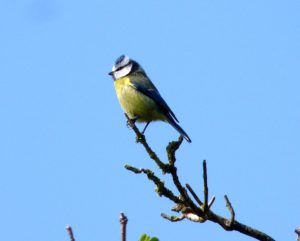 house:
house:
If you are still feeding birds, open your windows and try taking photos of birds on your feeders. You can even try through the glass. Even better if you can get a picture of a bird in a tree.
If you have a nest box or you know where a robin or blackbird, say, has made a nest, try keeping a record of 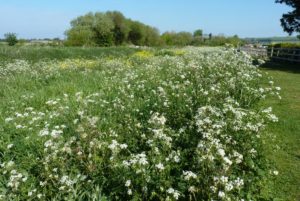 activities: taking in nesting materials, feeding young and fledglings. Keep a note of key dates and you can even record your findings on the website of the British Trust for Ornithology (BTO): www.bto.org.
activities: taking in nesting materials, feeding young and fledglings. Keep a note of key dates and you can even record your findings on the website of the British Trust for Ornithology (BTO): www.bto.org.
A walk up the Rife is a must in May. The white Cow Parsley is in full 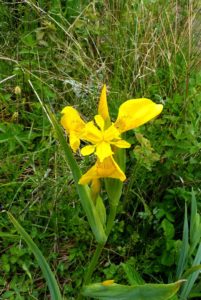 bloom all along the banks and the Yellow Flags (Yellow Iris) are just coming out. Soon, the Early Marsh Orchids will be in bloom.
bloom all along the banks and the Yellow Flags (Yellow Iris) are just coming out. Soon, the Early Marsh Orchids will be in bloom.
Two birds to look out for on the Rife which like the reeds. Reed Buntings sing from the tops of reeds or from bushes. Their song is a dull few notes but they are a lovely bird. Reed Warblers sing from lower down in the reeds and have an interesting chatty, jittery song which seems to go round in circles. They make their nests in the reeds whereas Reed Buntings usually nest in scrubby vegetation nearby.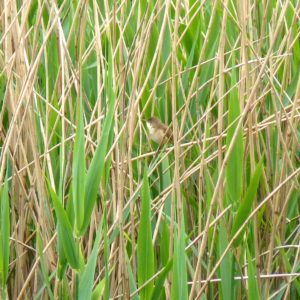
A Taste of Spring
Please see below a wonderful video of Arundel Castle Gardens with the tulips in bloom:

